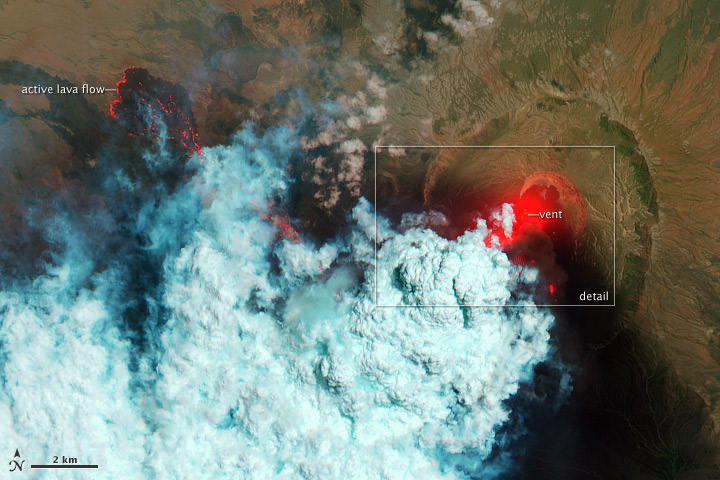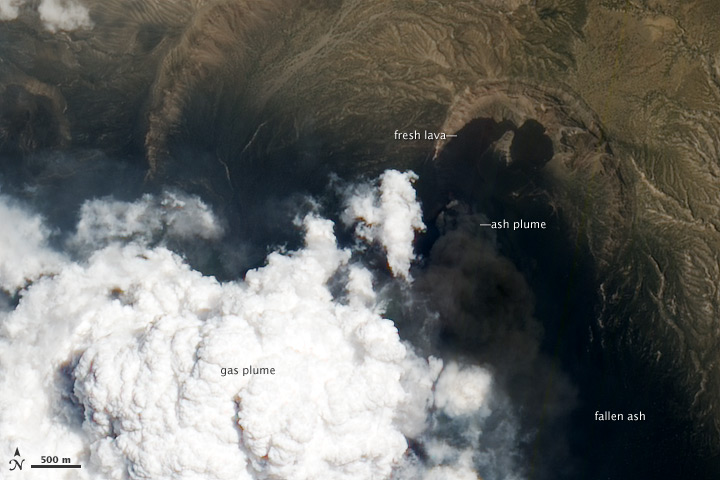Remote Nabro Volcano Eruption Revealed in Satellite Photos

Eritrea's Nabro volcano has been erupting for a week, but few details of the event are known because of the volcano's remoteness. But a pair of new satellite photos have revealed the first detailed look at the volcano's erupting vent and lava flows.
Nabro began erupting on June 12, and has sent ash drifting over much of East Africa and the Middle East. It is located in an isolated region along the border between Eritrea and Ethiopia.
Because of the volcano's remoteness, satellite remote sensing is currently the only reliable way to monitor the ongoing eruption. These images of the eruption were taken by the Advanced Land Imager (ALI) aboard the Earth Observing-1 (EO-1) satellite on June 24. [See the Nabro volcano from space ]
The bright red portions of the false-color image above indicate hot surfaces. Hot volcanic ash glows above the vent, located in the center of Nabro's caldera.
To the west of the vent, portions of an active lava flow (particularly the front of the flow) are also hot. The speckled pattern on upstream portions of the flow are likely due to the cool, hardened crust splitting and exposing fluid lava as the flow advances.
The bulbous blue-white cloud near the vent is likely composed largely of escaping water vapor that condensed as the plume rose and cooled. The whispy, cyan clouds above the lava flow are evidence of degassing from the lava.
The natural-color image below shows a close-up view of the volcanic plume and eruption site. A dark ash plume rises directly above the vent, and a short, inactive (cool) lava flow partially fills the crater to the north.
Get the Space.com Newsletter
Breaking space news, the latest updates on rocket launches, skywatching events and more!

A gas plume, rich in water and sulfur dioxide (which contributes a blue tint to the edges of the plume) obscures the upper reaches of the active lava flow. Black ash covers the landscape south and west of Nabro.
This story was provided by OurAmazingPlanet.com, a sister site of SPACE.com. Follow SPACE.com for the latest in space science and exploration news on Twitter @Spacedotcom and on Facebook.
Join our Space Forums to keep talking space on the latest missions, night sky and more! And if you have a news tip, correction or comment, let us know at: community@space.com.
For the science geek in everyone, Live Science breaks down the stories behind the most interesting news and photos on the Internet, while also digging up fascinating discoveries that hit on a broad range of fields, from dinosaurs and archaeology to wacky physics and astronomy to health and human behavior. If you want to learn something interesting every day, Live Science is the place for you.










